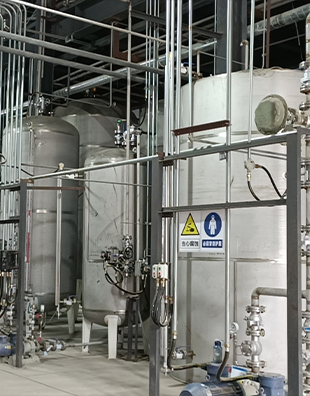Understanding Coagulants and Flocculants for Effective Water Treatment Solutions
Coagulants and Flocculants Key Players in Water Treatment
Water treatment is an essential process in ensuring public health and environmental sustainability. Among the various methods employed, the use of coagulants and flocculants stands out as a critical technique in purifying water, particularly in the treatment of drinking water and wastewater. These substances play a vital role in separating suspended particles from water, thereby improving its clarity and quality.
Coagulants are chemicals that facilitate the aggregation of small particles into larger clusters, commonly known as flocs. When water is contaminated with suspended solids, such as silt, clay, and organic matter, these small particles tend to remain dispersed due to their negative charges, which repel each other. Coagulants help neutralize these charges, allowing the particles to come together and form larger aggregates that can be more easily removed from the water. Common coagulants include aluminum sulfate (alum), ferric chloride, and polyaluminum chloride.
Coagulants and Flocculants Key Players in Water Treatment
Once coagulation has occurred, flocculation follows as the next step in the treatment process. Flocculation is the gentle mixing of the water to encourage the growth of flocs into larger aggregates, which makes them easier to remove. Flocculants are often high molecular weight polymers that assist in this aggregation process. These synthetic or natural polymers help bridge the gaps between particles, promoting the formation of larger flocs that can be separated from the water through sedimentation or filtration.
coagulants and flocculants

The efficacy of flocculants can vary considerably based on factors such as water temperature, pH, and the specific type of impurities present. Commonly used flocculants include polyacrylamides, which are prized for their ability to speed up sedimentation rates and improve the overall efficiency of the water treatment process. Biopolymers, derived from natural sources like starch or algae, are also emerging as eco-friendly alternatives in flocculation.
The combination of coagulants and flocculants enhances the overall efficiency of water treatment systems. By employing these agents in tandem, water treatment facilities can significantly reduce the concentrations of suspended solids, pathogens, and other contaminants, leading to clearer, safer water. Additionally, this dual approach can lower operational costs by reducing the need for further treatment processes, such as filtration or chemical disinfection.
While the advantages of using coagulants and flocculants are numerous, there are also challenges associated with their use. Over-dosing can lead to excess sludge production, which necessitates additional handling and disposal efforts. Furthermore, the residual chemicals left in the treated water may pose health risks if they are not adequately managed. This underscores the importance of careful monitoring and control during the water treatment process.
In recent years, there has been a growing trend towards the development of more sustainable and biodegradable coagulants and flocculants. Research into natural coagulants derived from plant materials, such as Moringa oleifera seeds, has shown promising results in terms of both effectiveness and environmental impact. Additionally, advancements in polymer technology are paving the way for the creation of flocculants that are not only efficient but also pose less risk to aquatic ecosystems.
In conclusion, coagulants and flocculants are indispensable components of modern water treatment processes. Their ability to facilitate the removal of suspended particles plays a crucial role in delivering clean, safe water for consumption and protecting the environment. Ongoing research and innovation in this field are essential to enhance their effectiveness, reduce environmental impact, and address the growing challenges posed by water scarcity and pollution. As we move towards a more sustainable future, the continued optimization of these key players in water treatment will be vital in safeguarding our most precious resource clean water.
-
Water Treatment with Flocculant Water TreatmentNewsJun.12,2025
-
Polymaleic AnhydrideNewsJun.12,2025
-
Polyaspartic AcidNewsJun.12,2025
-
Enhance Industrial Processes with IsothiazolinonesNewsJun.12,2025
-
Enhance Industrial Processes with PBTCA SolutionsNewsJun.12,2025
-
Dodecyldimethylbenzylammonium Chloride SolutionsNewsJun.12,2025





